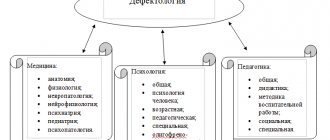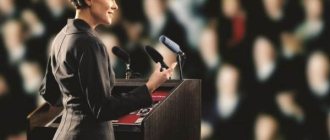Stroke is a disease that can affect a person of any age. The consequences of circulatory disorders can be different - from decreased coordination of movement to complete paralysis. But in almost all cases, the patient requires speech restoration after a stroke. It is speech dysfunction that doctors recommend paying attention to first of all - this disorder is the first sign signaling changes in the brain.
Factors indicating that a stroke has occurred:
- incorrect placement of words in a sentence;
- unclear articulation;
- misunderstanding the speech of interlocutors;
- inability to remember the names of objects;
- confused expression of one's thoughts.
Such disorders do not disappear quickly, but are still treatable. Sometimes speech is restored without any special classes or medication. But in most cases, patients need the help of speech therapists and the development of a special rehabilitation program.
Why is speech impaired after a stroke?
Speech problems resulting from a stroke are called aphasia. Loss of the ability to speak clearly is a consequence of:
- breaking connections between neurons;
- disruption of the nutrition of neurons responsible for speech;
- compression of brain tissue by a hematoma.
The degree of speech impairment depends on the area of the brain in which the vascular rupture occurred and the number of affected vessels. Much in treatment depends on the timeliness of the measures taken and on the rehabilitation program. Mandatory sessions with a speech therapist after a stroke are supplemented by medications, physiotherapy, and work with a psychologist.
There is no universal therapy for aphasia - each case requires a personal approach, coordinated work of several specialists: a neurologist, a doctor in the rehabilitation department, a speech therapist. Also included in the work are massage therapists, physiotherapists, and physical therapy instructors. All these specialists are on the staff of our rehabilitation center. They have undergone special training programs to work with guests who have suffered a stroke.
The rehabilitation program depends on the type of aphasia:
- complete (total). This is the most complex form of speech dysfunction. The patient does not speak at all, does not recognize loved ones, does not understand speech addressed to him;
- sensory. The patient does not understand the words of his native language - they sound to him as completely unfamiliar. The reason is damage to Wernicke's center, which is responsible for speech recognition;
- motor. A person understands speech addressed to him, but cannot clearly pronounce sounds due to disruption of the facial muscles. The muscles lose mobility, so the patient trying to answer can only produce vague sounds;
- amnestic. Damage to the brain caused memory impairment. The person does not remember many words and cannot name the objects around him. He has to restore the vocabulary he had before the stroke;
- semantic. Violations are revealed in a decrease in the complexity of statements: the patient does not perceive long sentences. It must be addressed in short, simply constructed phrases. He himself also expresses his thoughts in short phrases. Long sentences become incomprehensible to him, and if he himself tries to say a long sentence, it turns out confused, the main idea is lost by the end of the statement.
The type of aphasia is an important factor when creating a rehabilitation program. The duration of recovery is a personal parameter; it is impossible to predict in advance when speech will be restored. Visible improvements occur after 3-6 months. The duration of rehabilitation can reach 3-5 years.
How to restore speech after a stroke
The first few days after a stroke are the time to take urgent measures aimed at preserving body functions and preventing the occurrence of irreparable damage. After stabilization has occurred, doctors begin to restore speech. Typically, treatment for speech dysfunction begins a week after the stroke. An important point: the patient must be physically ready to work. If such readiness is not observed, rehabilitation can be postponed. But no more than two months. Two months after a stroke, the nervous system almost loses the ability to restore lost functions.
A personal rehabilitation program is drawn up for each patient. It is better to start classes with a speech therapist after a stroke individually, one on one with a speech therapist. At the first meeting, the speech therapist determines the patient’s condition, his reaction to speech of different volumes, and his ability to express his thoughts. The first lessons take a maximum of 10-15 minutes.
If the first sessions give a positive result, the patient is offered group classes. By studying with people who have suffered a stroke and have similar speech problems, the patient becomes more relaxed. He sees how other people cope with the situation, tries to achieve success, sometimes even a certain competitive moment arises.
The help of loved ones is of great importance for speech restoration, so it would not be a bad idea for relatives to undergo training. For example, reading aloud shows a good effect. You need to start with small sentences, gradually moving on to texts.
There are several techniques that a speech therapist uses after a stroke.
- Phonetic. Its goal is to restore muscle mobility, to “put” the tongue and lips in place when pronouncing each individual sound. The work begins with phonetic gymnastics, including exercises to develop the lips (stretching the lips with a tube, pulling the lips with your fingers down, up, to the sides, smiling, capturing one lip with the other), tongue (pulling the tongue forward, touching the palate, upper and lower alveoli, licking the lips , rounding the tongue back). After gymnastics, you can move on to pronunciation of individual sounds, then to tongue twisters. The maximum time for the first lessons is 3-5 minutes. Gradually the time increases to 10-15 minutes.
- Semantic. The goal is the development of thinking through the activation of speech. Basic exercises: continuing the phrase started by the speech therapist, finding new words for the proposed vocabulary by association, organizing a dialogue with the speech therapist.
- Visual. The technique is borrowed from the arsenal of foreign language teachers. The goal is to restore the patient's perception of language. During classes, the speech therapist shows pictures to the person who has suffered a stroke, naming the objects depicted on them and illustrations to the text.
The post-stroke rehabilitation program also includes creative activities. Most often these are music, singing, and drawing classes.
Don't expect success right away. Only regular hard work gives positive results.
Recovery after a stroke is one of the areas of work of our rehabilitation center. Experienced speech therapists help our guests cope with speech disorders in individual and group lessons.
6.1. Methods for speech restoration in efferent motor aphasia
It was shown above that motor aphasia is not a homogeneous group of speech disorders, that it is based on completely different neurophysiological, psychophysiological and psychological mechanisms, and the localization of brain lesions in which motor aphasia occurs is located in different speech zones (see Fig. 3, 4).
Modern physiology considers motor processes not only as effector acts, as suggested by P. Broca and his contemporaries. Fundamental research by L. A. Orbeli, A. K. Anokhin, N. A. Bernstein showed that the organization of a motor act contains an afferent (tuning) and efferent (implementing) link, and each of them has its own special function in the organization of movements. Expressive speech, which is a complex motor act, includes in its composition (at the level of its motor organization) a system of afferent syntheses that create the necessary material patterns of articulations, and a system of efferent apparatuses that implement speech and make it possible to turn it into a smoothly flowing kinetic process. This process is disrupted when the anterior parts of the motor-speech zone - Broca's area (44th area) are damaged. The main defect manifests itself in the loss of the ability to quickly and smoothly switch from one level of articulated speech to the next; the pathological inertia that arises in these cases in the speech zones of the motor cortex can lead here to the fact that the patient, who pronounces a separate sound well, cannot move on to the next one and instead either continues to articulate the previous sound or produces a contamination (fusion) of the previous one sound with the right one. As a result of such defects, the dynamic patterns of the spoken word are disrupted and efferent (or kinetic) motor aphasia occurs.
The articulation of individual sounds here remains potentially intact; all the difficulties in patients with this form of motor aphasia begin as soon as the patients begin to pronounce a series of sounds-syllables, words, and especially phrases, where timely and accurate switching from one element to another is necessary. Violation of the mechanisms of switching from one motor program to another leads to the disintegration of the “kinetic melody” of speech, manifested in perseverations and echolalia, which interfere with the normal, smooth speech motor act.
Involuntary, automated speech in this form of aphasia remains more intact.
Only with efferent motor aphasia is there a symptom of difficulty engaging in active speech. Patients, when trying to make a spontaneous statement, when searching for a response in a dialogue, etc., cannot begin a phrase. As soon as the first word of the phrase he is looking for is pronounced to the patient, this difficulty disappears and he can pronounce the entire phrase. The described defect appears and is noticeable only in cases of moderate and mild severity of aphasia; in severe cases, this symptom is masked by the overall rough picture of speech impairment.
The central task of learning in efferent motor aphasia is to overcome inertia in the speech process. The goal is to restore oral speech, writing and reading, i.e., restore verbal forms of communication. This task can be realized by solving a number of specific problems: a) general disinhibition of speech; b) overcoming perseverations, echolalia; c) restoration of the patient’s general mental activity and verbal activity.
First stage of training. The task at this stage of training is to restore the patient’s ability to actively select and pronounce words or a series of words from the Strengthened and Automated Speech Series. The goal is to remove gross perseverations, echolalia, and disinhibition of speech. In these cases, teaching methods are used that help transfer the patient’s speech to an arbitrary level, i.e., at the first stage, the patient is taught to become aware of his speech and to speak voluntarily; an voluntary, conscious way of speaking can create the necessary conditions for overcoming perseverations. The second method also serves the same purpose - switching the patient’s consciousness from the pronunciation side of speech to its semantic side.
Speech disinhibition methods
Rehabilitation training for patients with efferent motor aphasia begins with methods of general disinhibitory influence on speech mechanisms. However, already at this stage of learning with efferent motor aphasia, the central task is the active selection of individual words from the usual speech series, strengthened in past experience. This skill is developed through the gradual implementation of the following system of methods, or “system of techniques?”
1. Repetition technique. Methods of repetition: a) conjugate (joint with a teacher, speech therapist); b) conjugate-reflected; c) reflected. These methods of repetition? speeches (words, phrases) at the beginning of training are not used simultaneously, but strictly sequentially. The repetition should be quite slow, melodious, drawn-out. The psychological meaning of this procedure is that it increases the time of repetition (i.e., pronunciation); an additional characteristic of speech is included in the pronunciation act - melodiousness, which acts as an additional support for overcoming perseverations.
Chapter 6. Restoration of oral expressive speech – previous | next – 6.1. Methods of speech restoration for efferent motor aphasia (continued)
Content. Neuropsychological rehabilitation of patients. Speech and intellectual activity.









